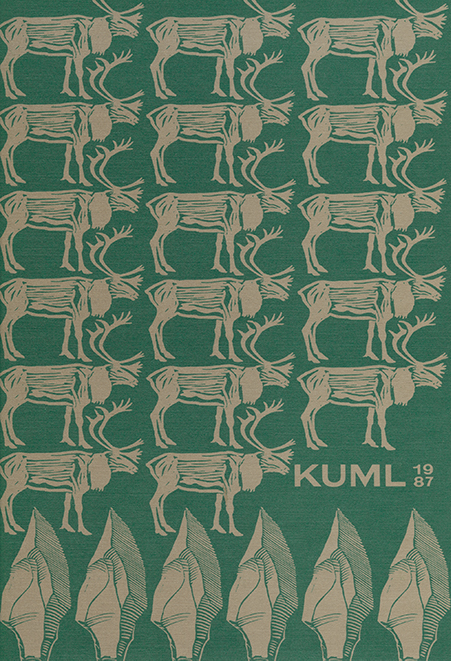An 11th century linen shirt from Viborg
DOI:
https://doi.org/10.7146/kuml.v35i35.110466Keywords:
linen shirt, viking age, viborgAbstract
An 11th century linen shirt from Viborg
A preliminary report
Excavations in 1981 and 1984/85 by Viborg Stiftsmuseum have established that the town of Viborg, situated in the centre of Jutland, already existed in the Viking age, the dating being based upon dendrochronology and coins. The site, on the shore of Søndersø, was inhabited from about 1000 until about 1300, when it was submerged in connection with the building of a royal stronghold (Fig. 1). Parts of houses, well constructions and fences as well as other archaeological objects, all in a good state of preservation, proved that different artisans had been working and living here; also found was a big lump of textile material.
Analyses at Viborg Amtskonserveringsanstalt of the material, the different fragments (Fig. 2-3, 5) and the seams (Fig. 7-8) revealed that the find was the greater part of a male shirt made of Z/Z-spun, linen tabby (Fig. 6). Based on the interpretation a reconstruction was made (Fig. 4): a rather slim-fit poncho, without seams on top of the shoulders, the skirt being open on both sides; the neck linning is continued into two ribbons for tying; the upper part of the shirt has a band, which is radially stitched to the outer garment. It is presumed that the shirt had long sleeves.
The likely utilization of the cloth length (Fig. 10) and the relevant etymology of this piece of male garment are discussed.
Most of our knowledge concerning Viking male costume derives from written documents, depictions and surviving textile fragments from archaeological excavations. Men wore tunics reaching down to about the knees, long trousers and a cloak fastened with a buckle on the right shoulder.
The Viborg garment is the only profane shirt/tunic from the Viking period so far found in Scandinavia or in Europe as a whole. Tracing the history of this type of shirt necessitates seeking its roots among the surviving Mediterranean shirts/tunics, especially from the necropoles at Antinoë and other locations in northern Egypt (Fig. 12).
These tunics, the cut of which is Persian-inspired, can be followed throughout the Mediterranean countries in the latter half of the first millennium. The slim-fit poncho cut of the Viborg shirt fits into this line of development, and scattered finds in Europe show that this cut continued to be used after the Renaissance.
The cultivation and use of linen, Linum usitatissimum, in Denmark during the Viking and early medieval ages are discussed. Archaeological finds of tiny linen fragments and of pollen and seed/macrofossils are only sparse, perhaps due to generally bad preservation conditions for vegetable fibers and seeds. Certain finds indicate that linen was cultivated mainly for its valuable oils.
The likely place of manufacture of the shirt is discussed. According to experts, linen material woven to medium quality requires a horizontal loom (Fig. 14), which was known in Europe at the time and archaeologically documented from the 10th century in Poland and at Haithabu. The Søndersø-finds in general attest to professional artisans and some to cultural contacts with West and Central Europe; it is thus likely that the horizontal loom was known in Viborg and that the shirt was made there, possibly from flax grown elsewhere.
Mytte Fentz
Downloads
Published
How to Cite
Issue
Section
License
Fra og med årgang 2022 er artikler udgivet i Kuml med en licens fra Creative Commons (CC BY-NC-SA 4.0).
Alle tidligere årgange af tidsskriftet er ikke udgivet med en licens fra Creative Commons.


